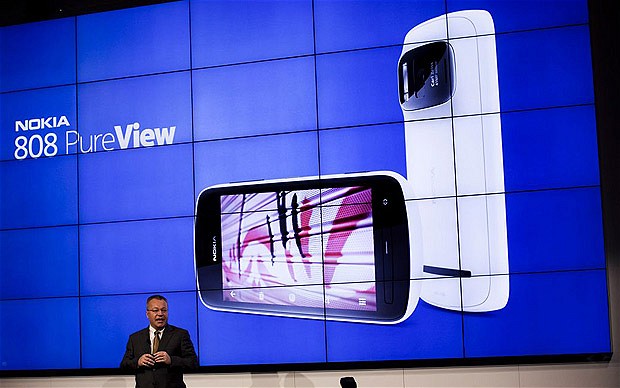
So what is Nokia PureView Technology? Trust Nokia to excel on its hardware. According to Nokia’s product documents:
The Nokia PureView Pro imaging technology is the combination of a large, super high resolution 41Mpix with high performance Carl Zeiss optics. The large sensor enables pixel oversampling, which in a nutshell means the combination of many pixels into one perfect pixel. PureView imaging technology is the result of many years of research and development and the tangible fruits of this work are amazing image quality, lossless zoom, and superior low light performance.So now the second question would be, let me guess
What is pixel oversampling?
What is digital image made up of? Pixels. Every digital image is build on thousands of pixels and each pixel can only be of one color. This often leads to poor results on many instances of photography and image rendering. To avoid it, every pixels are usually oversampled. So what happens is each pixel is ‘oversampled’, by rendering it as if it were 5 pixels or more, and assigning an ‘average’ colour to the rendered pixel. Also pixel oversampling results in true R, G and B pixels eliminating what is called Bayer pattern problem.
Practical Implications of PureView technology:
Nokia does not expect people to take pics using whole of 41 megapixel. Admittedly for a good quality pics 3-8 mp is more than enough and very rarely someone is going to take print king-size. On normal usage, very few even print pictures bigger than A4 size! PureView is just not about 41 MP but the real magic is in what it can do along with the sensor, optics and Nokia’s propreitory imaging technology. That’s exactly what Nokia has done on 808. Along with the talking number of 41 MP, it has also fitted in a large sensor. On conventional camera phones, the digital zoom blow up the image to get close and resulting in picture distortion. Nokia’s 808 PureView handles it differently. It does away with the digital zoom and the x upscale.When you zoom with the Nokia 808 PureView, in effect you are just selecting the relevant area of the sensor. So with no zoom, the full area of the sensor corresponding to the aspect ratio is used. The limit of the zoom (regardless of the resolution setting for stills or video) is reached when the selected output resolution becomes the same as the input resolution. For example, with the default setting of 5Mpix (3072 x 1728), once the area of the sensor reaches3072 x 1728, you’ve hit the zoom limit. This means the zoom is always true to the image you want.With all the 41 MP in store, the camera technology is designed to deliver incredibly finer and small pictures minimizing the loss of quality. So even on manual mode you can capture the effective 38 MP frame, the default size what Nokia has kept on its 808 is 5 MP with an option for 8 MP mode, so it gives all those extra pixels to be accomodated to produce a fine picture with all the rich details and elements. With oversampling, however, images can be noise free, yet incredibly detailed and defined. Zoom into the 5Mpix images at 100% magnification on your PC screen, and you’ll see. There’s something beautifully pure about the detail — not enhanced in anyway. We all know digital zoom results in the loss of image quality. Thanks to the monstrous 41 MP that spans a 7728 x 5368 pixels, you can crop the image on the spot and still find almost no loss in the quality. You just have to frame the image on a full resolution mode and then zoom in on any particular portion of the image and then select what you want, resulting on a rich content. And talking about Nokia’s technological excellence, thanks to its new compression technology even a 5 MP picture sits pretty at 1 MB in size on average. So shoot and load more fine pictures on your memory card. So because of the optics technology used on 808, your pictures tend to experience:
- Purity of detail.
- No distortion
- Very less noise, resulting on very good low light picture quality


1 Comment